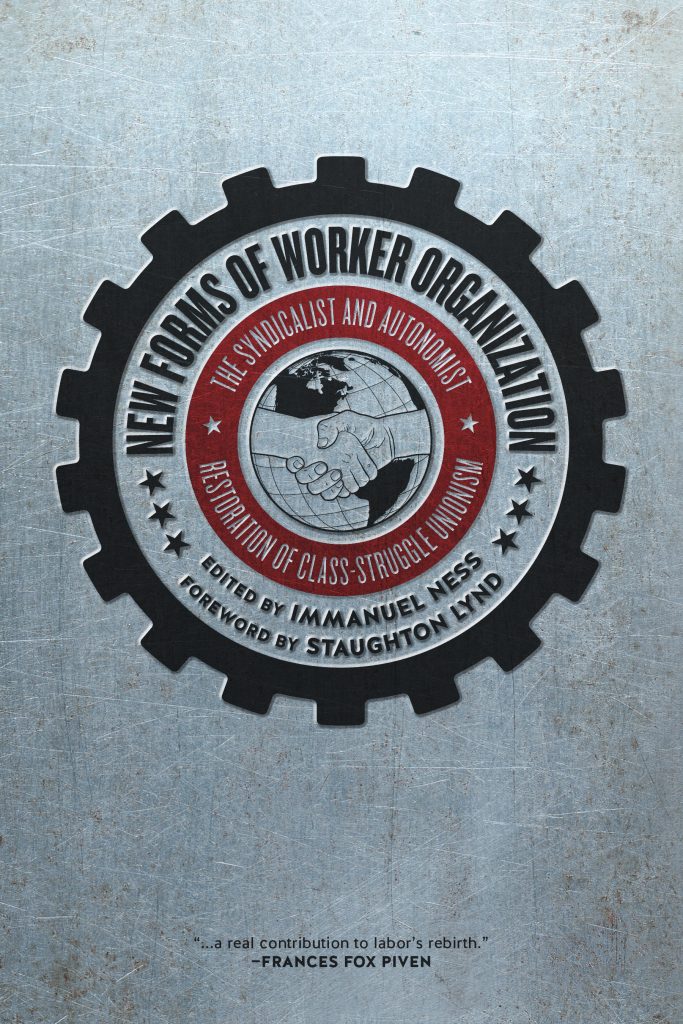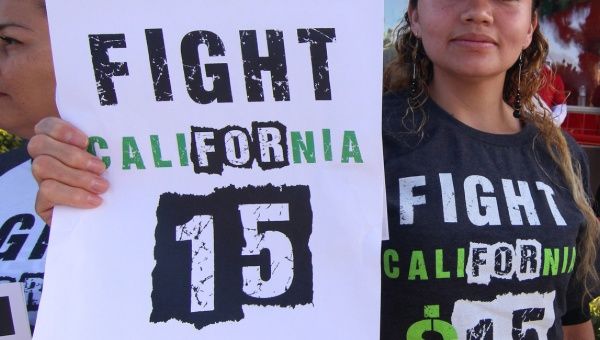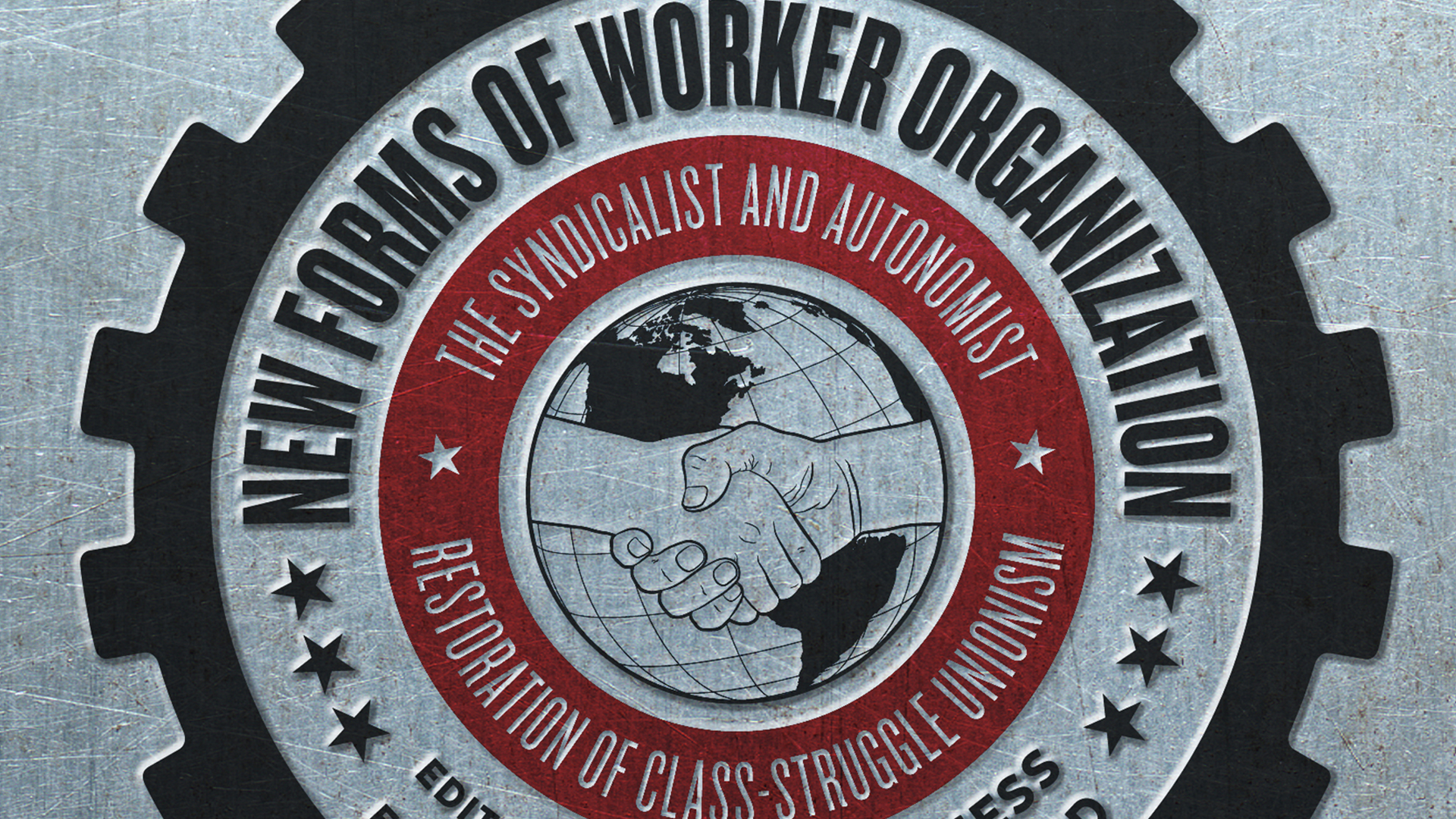
By Steve Early
TeleSur
October 6th, 2014
Workers can think and act like trade unionists even if they don’t have a union contract, have lost a government-supervised representation vote, or don’t plan to petition for such an election.
In a widely-reported speech last year, AFL-CIO president Rich Trumka declared that the U.S. “system of workplace representation is failing to meet the needs of America’s workers.” To reverse this longstanding trend, the labor federation leader recommended “new models for organizing workers” that don’t focus exclusively on establishing collective bargaining relationships with employers.
Before the AFL-CIO’s 2013 convention in Los Angeles, Trumka created a committee of labor historians to advise him about how such “new and forgotten methods of organizing” could be implemented. Meanwhile, local central labor councils were encouraged to hold “listening sessions” as part of a pre-convention drive “to come up with more viable union models.” At the convention itself, Trumka pledged labor movement support for “any worker or group of workers who wants to organize and build power in the workplace.”
As one group of AFL-CIO advisors explains, workers have had the legally protected right to form in-plant committees and engage in “concerted activity to improve wages, benefits, and/or working condition” ever since passage of the National Labor Relations Act (NLRA) in 1935. Such “minority union’ formations don’t have to be “officially recognized by employers or certified as collective bargaining representatives.”

Workers
can think and act like trade unionists even if they don’t have a union
contract, have lost a government-supervised representation vote, or
don’t plan to petition for such an election. And one well-known U. S.
labor law expert, Charles Morris, has even argued that the NLRA permits
“members-only bargaining” by unions in situations where workers lack
the majority support necessary for legal certification—a position
rejected by employers and, so far, the National Labor Relations Board
(NLRB) as well.
A Left-Wing Idea
The workplace experiments embraced, so belatedly, by mainstream labor in the U.S. reflect a broader conception of unionism long championed by the left. AFL-CIO critics, like sociologist Stanley Aronowitz and radical historian Staughton Lynd, argued years ago that union building should not be defined—or deformed– by legal certification, employer recognition, or NLRA-influenced union contracts (almost always containing a “no-strike” clause). Now, as Lynd notes in his introduction to a just-published book entitled, New Forms of Worker Organization: The Syndicalist and Autonomist Restoration of Class-Struggle Unionism, “alternative unionism” is much in vogue.
As its sub-title suggests, New Forms has a strong left syndicalist slant and tends to be critical of big national labor federations in just about every country covered. Edited by Manny Ness, contributors to the book include shop-floor organizers for the Industrial Workers of the World (IWW) and many others engaged in alternative union formation or agitation in South Africa, India, China, Australia, Argentina, Russia, Sweden, Madagascar, and Colombia. The strength of this eclectic collection, published by PM Press in Oakland, lies in its showcasing of labor organizing, often little known but sometimes fairly large scale.
Ness himself is a widely travelled and well-informed labor activist, who teaches at Brooklyn College/City University of New York and edits the labor journal, WorkingUSA. His own past research has focused on labor migration and global inequality, including the exploitation of foreign-born workers, by other immigrants, in the “green groceries” of New York City. In his introduction and concluding essay to this book, Ness argues that the fight against “bureaucratic unions” is a cross-border imperative, just as important for workers in the U.S. and the former Soviet Union as it is to an increasingly disillusioned South African working class.
South African Miners’ Revolt
In a chapter entitled “Exploding Anger: Struggles and Self-Organization in South Africa’s Mining Industry,” Cape Town labor educator Shawn Hattingh chronicles that alienation and resulting rank-and-file action. During the anti-apartheid struggle, black-led unions and the broader liberation movement were long influenced by Communist Party cadre within the Congress of South African Trade Unions (COSATU) and African National Congress (ANC). Today, the neo-liberal ANC, COSATU affiliates like the National Union of Mineworkers (NUM), and their CP allies face a labor revolt from below because of worker frustration with the labor and ANC officialdom, both viewed as corrupt and too cozy with management.
As Hattingh reports. South African miners began resorting to wildcat strikes and workplace occupations in 2009. When they protested unfair pay and unsafe conditions, NUM officials joined mine owners in calling for police intervention, which led to the massacre of 34 strikers at Marikana two years ago. In response, new forms of worker organization have sprung up to resist this repression and coordinate on-going workplace and community organizing.
“The strength of these workers assemblies and committees has been that they have united workers across unions, they have drawn in non-unionized workers; some have also included the unemployed and community members. The assemblies and workers communities have the potential to become a counter-power to the multi-national mining companies, supported by the South African state. To do so, however, depends on the workers’ building and sustaining these organs themselves. It is apparent that the state, the ruling party, the South African Communist Party, capital and most union officials are going to try to prevent this.”
Two of the book’s most timely and interesting case studies describe fast food and service worker organizing campaigns where left-leaning independent unions took the lead. Jack Kirkpatrick, an activist in the UK branch of the IWW, provides a history of recent organizing among London janitors. There, building cleaners from Africa, Asia, and Central America first tried to win union recognition under the banner of Unite, a stalwart of the Trade Union Congress. When the militancy and outspokenness of some of their leaders—and timidity of some of their TUC union helpers—led to a parting of ways, some of the insurgent cleaners “voted to leave Britain’s biggest trade union and join one of its smallest.”
In this tale of IWW-backed “solidarity unionism,” Kirkpatrick highlights examples of “leadership development through education on the job, empowerment through direct action, and ‘self-ownership’ of that action.” He also describes some left-wing union factionalism and in-fighting that persisted after the rift with Unite and proved to be a less-than-inspiring part of “justice for janitors” campaigning in London.
Fast Food Strike Activity
Back in the U.S.A, Erik Forman, a young veteran of IWW organizing at Starbucks and Jimmy John’s, a nationwide fast food chain, provides a colorful account of inside committee building and collective action by sandwich-makers in Minneapolis.
IWW recruitment there predated the recent fast-food worker mobilization in the US, which has been heavily funded by the Service Employees International Union (SEIU) and oriented toward winning hikes in the statutory minimum wage at the city, state, or federal level.
SEIU has spent a reported $10 million to $15 million so far. It has channeled some of that money into local community-labor organizations assisting fast food workers. Their widely publicized protest strikes in 2013-14 have resembled labor’s pre-NLRA skirmishing with management in the 19th and early 20th centuries, more than post-war disputes leading to a signed contract settlement. Earlier this year, SEIU and is allies brought hundreds of fast food workers to Chicago for a national “Fight For Fifteen” strategy conference. In September, about 500 “Fight for Fifteen” activists were arrested in three dozen cities, as part of the latest escalation of worker-community pressure on firms like McDonalds, Burger King, and Wendy’s.
Lacking financial and staff resources on this scale, the IWW utilized volunteer organizers who focused their efforts on a single-family owned fast food purveyor, with about 1,400 outlets. IWW supporters built a citywide committee with worker representatives from nine Jimmy John’s shops in Minneapolis. Foreman provides a detailed, often very humorous, and self-critical account of their guerilla warfare with management. His campaign memoir is most useful in its recounting of the workers’ creative employment of direct action, a hallmark of Wobbly organizing in both its early 20th century incarnation and reinvention one hundred years later.
The IWW’s imaginative assault on the company’s policy of denying paid sick days successfully linked worker complaints (and illnesses) with customer concerns about safe-food preparation. Six union activists, including Forman, were fired in retaliation for their “Sick of Working Sick” whistle blowing. Three years later, the NLRB finally got around to ordering their reinstatement in a decision issued in August, long after active organizing had ceased.
A Labor Board Vote
Notwithstanding much past IWW criticism of “contract unionism” and reliance on the NLRB, Jimmy John’s organizers came under worker pressure to petition for a Labor Board election. After months of tiring, almost daily battles with management, some union supporters wanted the legitimacy of legal certification and formal bargaining on the many job-related problems that remained unresolved. This highly unusual (for fast food) representation vote was held, in the usual U.S. private sector fashion, after a brutal escalation of management’s anti-union campaigning. The Jimmy John’s Workers Union (JJWU) lost by a vote of 87 to 85. (The IWW’s re-election assessments, based on union card signing and other expressions of union sympathy, put “Yes” voters at more than 100.)
The Forman and Kirkpatrick sections of the book are, by themselves, worth the modest price of New Forms of Worker Organization. Both illustrate the real-world challenges of sustaining workplace activity and building sustainable dues paying membership organizations in a workforce with low-pay, scattered job sites, high turnover, and, in some cases, close relationships between workers and their immediate bosses.
As Forman concludes, the level of militancy sustained over several years by Jimmy John’s workers “can only be built by organizers who are thoroughly embedded in the segment of the working class they are organizing.”
His elaboration on that message should be required reading for anyone involved in fast food worker campaigning or the U.S. retail store workers network known as “Our Wal-Mart,” which is backed by the United Food and Commercial Workers. Other readers—even those less enthused about the “syndicalist and autonomist” tradition championed by Ness et al–will find this collection to be a very timely guide to alternative unionism, old and new, home-grown and foreign born.
(Steve Early has been active as a labor journalist, lawyer, organizer, or union representative in the U.S. since 1972. He is the author, most recently of Save Our Unions: Dispatches from a Movement in Distress (Monthly Review Press, 2013) For more about his work, see www.steveearly.org He can be reached at [email protected].)






